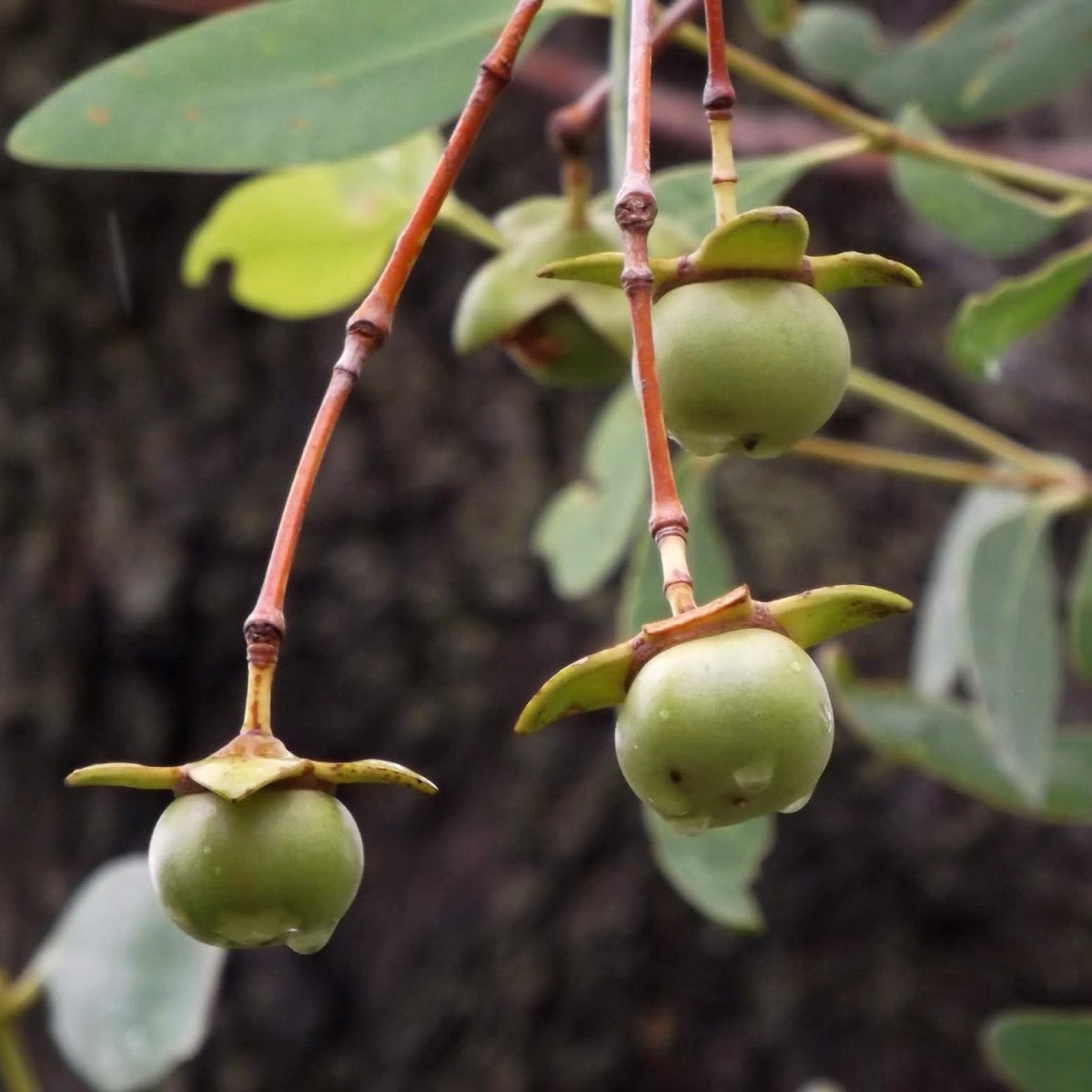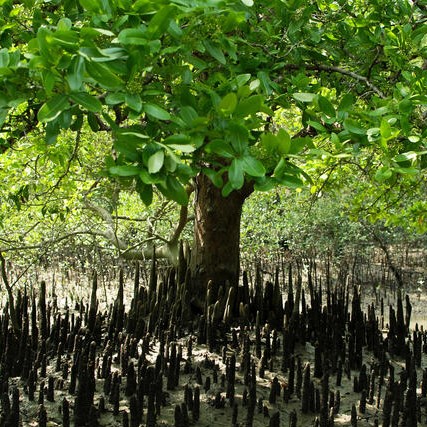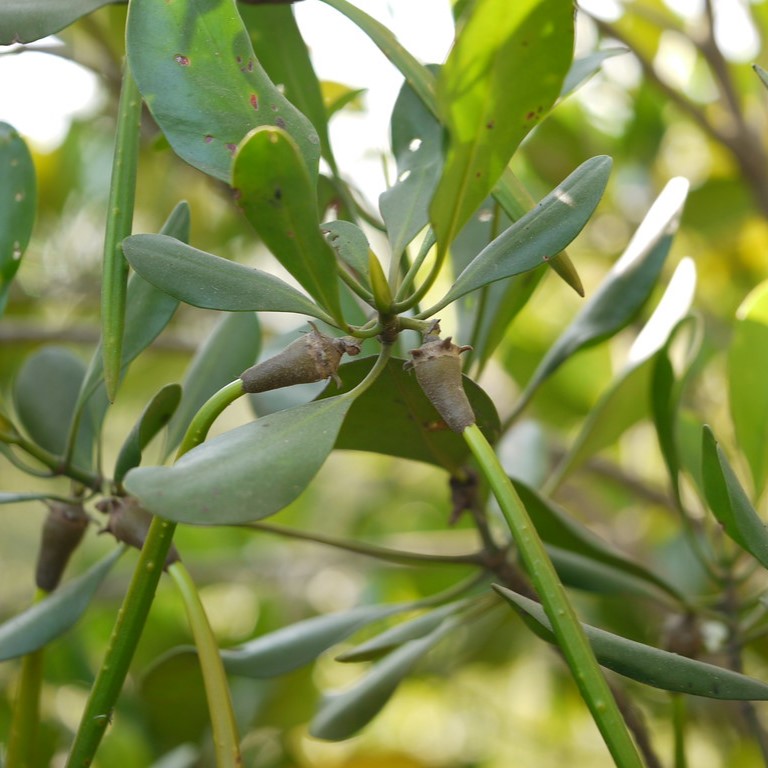Description:
- Keora Mangrove, also known as Sonneratia apetala, is a type of mangrove tree that belongs to the family Lythraceae. It is native to the coastal regions of South and Southeast Asia, including India, Bangladesh, Myanmar, Thailand, and Malaysia.
- Keora Mangrove is a small to medium-sized tree that can grow up to 20 meters tall. It has a broad, spreading crown with dense foliage, and its leaves are elliptical, shiny, and leathery, with a dark green color on the upper surface and a pale green color on the underside. The tree blooms with small, white or pale pink flowers, which are followed by fruit that is a woody, pear-shaped capsule containing numerous seeds.
- Keora Mangrove is well adapted to the harsh coastal environment and is able to survive in areas with high salinity, fluctuating tides, and waterlogging. Its roots are specialized to breathe air, and it can also absorb water and nutrients directly through its leaves. The tree also plays an important ecological role by providing habitat and food for a variety of species, including birds, fish, and crabs. It also helps to stabilize coastal soils and protect against erosion.
- In addition to its ecological importance, Keora Mangrove is also used by local communities for various purposes. Its wood is used for fuel, charcoal, and construction, while its leaves are used to make thatch for roofing and woven products such as mats and baskets. Its fruit and bark are also used in traditional medicine for various ailments.
Plantation Process:
If you are interested in planting a Keora Mangrove (Sonneratia apetala), here are some steps to follow:
- Choose the planting site: Keora Mangroves require a specific environment to grow, including an area that is regularly flooded by tidal waters and has a high salt content in the soil. The site should also receive plenty of sunlight.
- Prepare the soil: The soil should be well-draining and rich in organic matter. If the soil is too compacted or does not drain well, you may need to improve it by adding compost or sand.
- Dig the hole: Dig a hole that is at least as deep and wide as the tree's root ball. If you are planting multiple trees, space them at least 3-4 meters apart to allow for growth.
- Plant the tree: Carefully remove the tree from its container and place it in the hole. Make sure that the top of the root ball is level with the surrounding soil. Backfill the hole with soil and tamp it down gently to remove any air pockets.
- Water the tree: Water the tree thoroughly after planting to help settle the soil and encourage root growth. Make sure to keep the soil moist, but not waterlogged, as the tree establishes itself.
- Mulch the tree: Add a layer of mulch around the base of the tree to help retain moisture and suppress weeds. Make sure to keep the mulch at least a few centimeters away from the trunk to prevent rot.
- Monitor the tree: Keep an eye on the tree over the next few weeks and months to ensure that it is growing well. Water the tree regularly and fertilize it once a year with a balanced fertilizer if necessary.
Overall, planting a Keora Mangrove tree requires careful consideration of the site and soil conditions. With proper planting and care, the tree can grow to be a beautiful and valuable addition to coastal ecosystems.
Plant Care:
If you are interested in caring for a Keora Mangrove (Sonneratia apetala) tree, here are some important tips to keep in mind:
- Soil: Keora Mangroves grow best in soil that is rich in organic matter and has a high salt content. The soil should be well-draining and should not stay waterlogged for long periods.
- Water: These trees require a lot of water, so they should be planted in areas that are regularly flooded by tidal waters. If you are growing a Keora Mangrove tree in a pot, make sure to keep the soil moist at all times. Do not let the soil dry out completely, as this can be fatal to the tree.
- Sunlight: Keora Mangroves require full sun exposure to thrive, so they should be planted in areas that receive at least six hours of direct sunlight per day.
- Fertilizer: These trees do not require regular fertilization, as they can absorb nutrients from the surrounding soil and water. However, you may choose to fertilize them with a balanced fertilizer once a year to encourage growth and health.
- Pruning: Keora Mangroves do not require much pruning, but you may want to trim off any dead or diseased branches to keep the tree looking healthy.
- Pests and diseases: Keora Mangroves are generally resistant to pests and diseases, but they can occasionally be affected by fungal infections or insects such as mealybugs or scale insects. Treat any issues promptly with an appropriate insecticide or fungicide.
Overall, Keora Mangroves are relatively easy to care for, as long as they are planted in the right environment and given enough water and sunlight.
----------------------------------------------------------------------------------------------------------------------------------------------------------------------------------------------------------------------------------------------------------------------------------------------------------------------------------------------------
- Dispatch in 3-5 Days
- Images are for reference purposes only. Actual product may vary in shape or appearance based on climate, age, height. etc. The product is replaceable but not returnable.
- All the plants will be delivered in grow bag and if you want pot (please leave a note and extra charges will be taken for pot).





